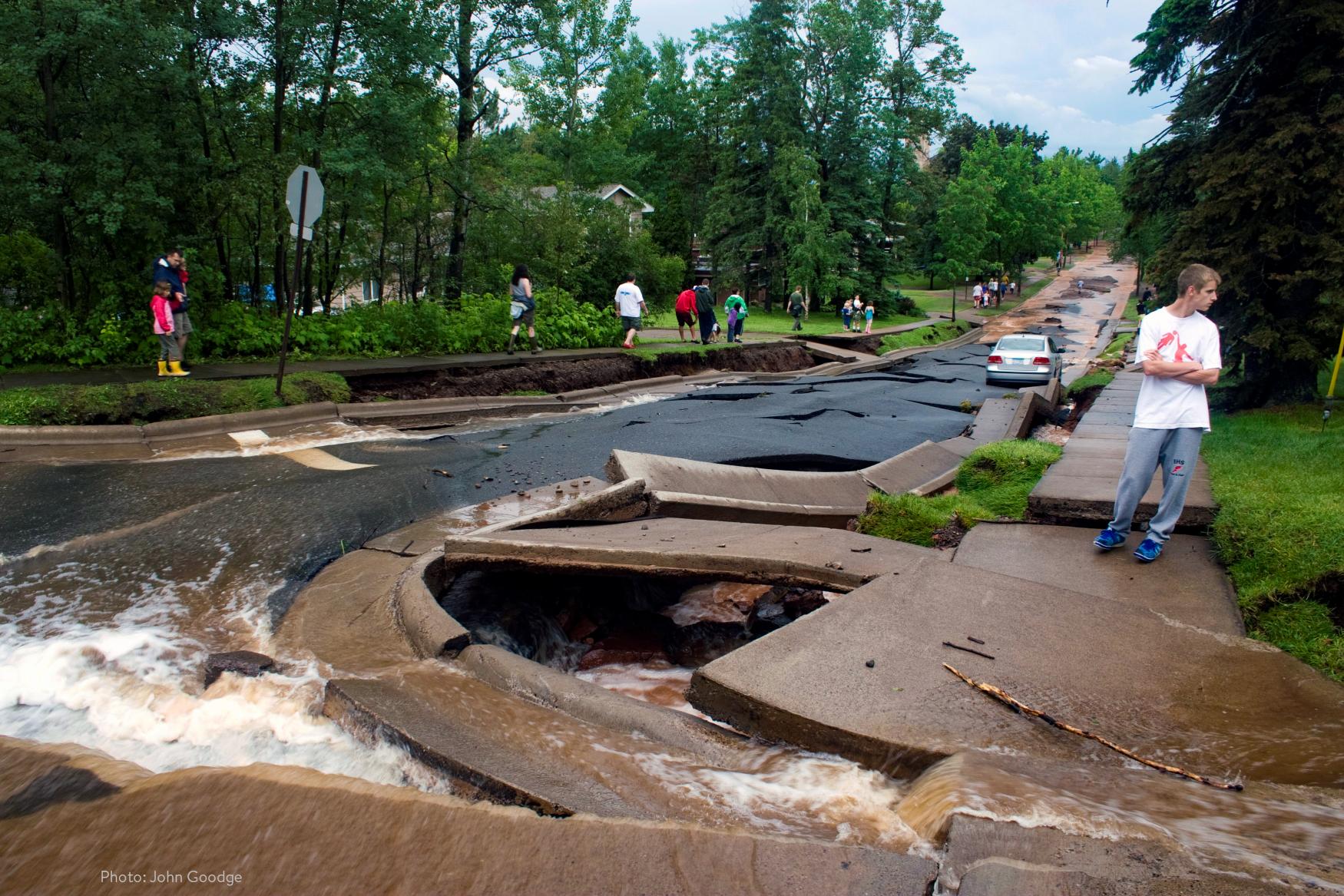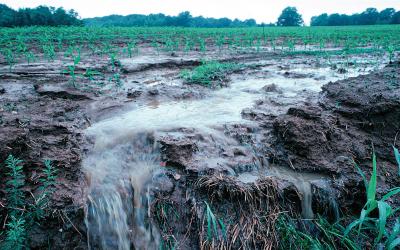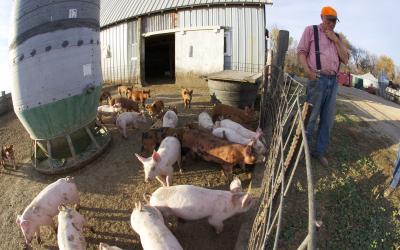Throughout the Midwest, heavy precipitation events have increased in frequency and intensity since 1901, and are projected to increase through this century, according to the latest National Climate Assessment.
The Department of Natural Resources identifies 19 “mega-rain” events in Minnesota, in which six inches of rain covered more than 1,000 square miles, and the core of the event topped eight inches. Rainfalls of this magnitude and geographic extent can be catastrophic.
Of the 19 events listed from 1866 to present, 10 have happened in just the last 20 years. Mega-rains are four times more common after the year 2000, compared to the previous 30 years.
In one instance, Duluth got 7.24 inches of rain over two days in June 2012—the most damaging flood in Duluth’s history. The St. Louis River at Scanlon set a new record crest at 16.62 feet, breaking the previous record from 1950. The river rose 10 feet in 24 hours, and some evacuation of homes was necessary.
Mega-rain events and flash flooding can be devastating for individuals and communities—destroying homes and businesses, damaging our infrastructure, contaminating drinking water, and causing physical injuries or even death. Flooded buildings can experience mold growth that can trigger asthma attacks and allergies during cleanup efforts, and mental stress following flooding can affect our health. These hazards create physical, mental, and emotional challenges for Minnesotans, and put an enormous financial burden on our communities.
Three years after the 2012 flood in Duluth, St. Louis County told the Pioneer Press it had spent $50 million on repairs in the wake of the flood, particularly on road work. The City of Duluth spent close to $50 million on repairing damage to city property. The flood also caused an estimated $100 million in personal property damage in Duluth.
The Minnesota Department of Transportation (MnDOT) had to repair and rebuild from significant damage, including Minnesota highway 210 in Jay Cooke State Park, which was closed for more than three years. MnDOT notes that our roads and bridges will be increasingly stressed by intense weather events caused by climate change.
More information: Historic Mega-Rain Events in Minnesota (DNR)
Photo: John Goodge



